Abstract
1. The extracellular pH value in the dermis of human skin (skin pH) was measured in vivo using glass micro-electrodes. They were found to be both reliable and accurate. 2. The mean value of skin pH measured in the legs of forty different volunteers was found to be pH 7.54 +/- 0.09 (S.D.). No difference in skin pH was observed between males and females, or in different regions of the limb. 3. Local reductions in skin surface temperature in ten subjects caused an increase of pH 0.023 +/- 0.007 per degree C fall. 4. A 20 min period of tourniquet ischaemia in twenty volunteers induced a fall in skin pH of 0.13 +/- 0.05 units. 5. Hyperventilation during a 10 min period of breathing 10% O2 in N2 caused an increase of pH 0.04 +/- 0.02 in the skin of healthy subjects. 6. Skin pH fell to a value 0.02 +/- 0.02 units below normal 10 min after the hypoxic period, suggesting the presence of excess lactate. 7. Skin pH results compared well with blood gases and pH values of arterialized samples taken during hypoxia. 8. It was concluded that the system was suitable for clinical trials.
Full text
PDF

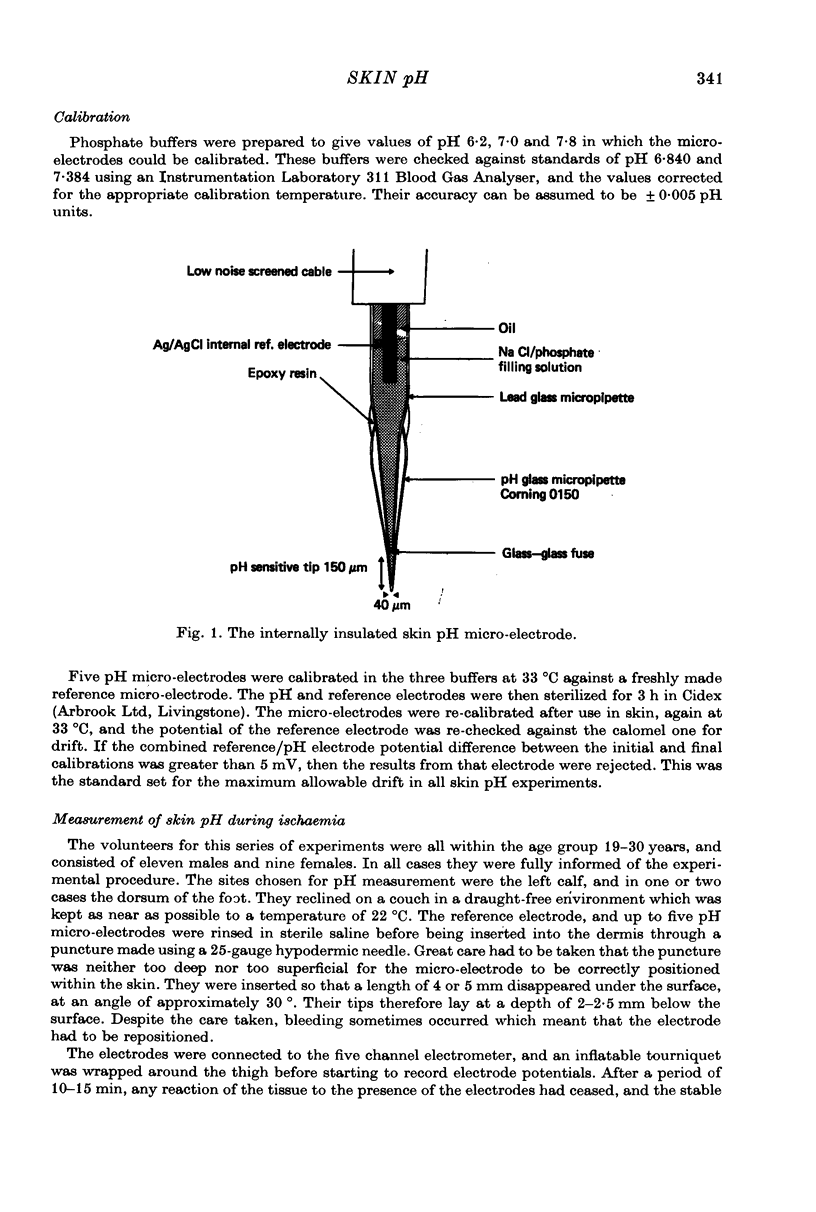
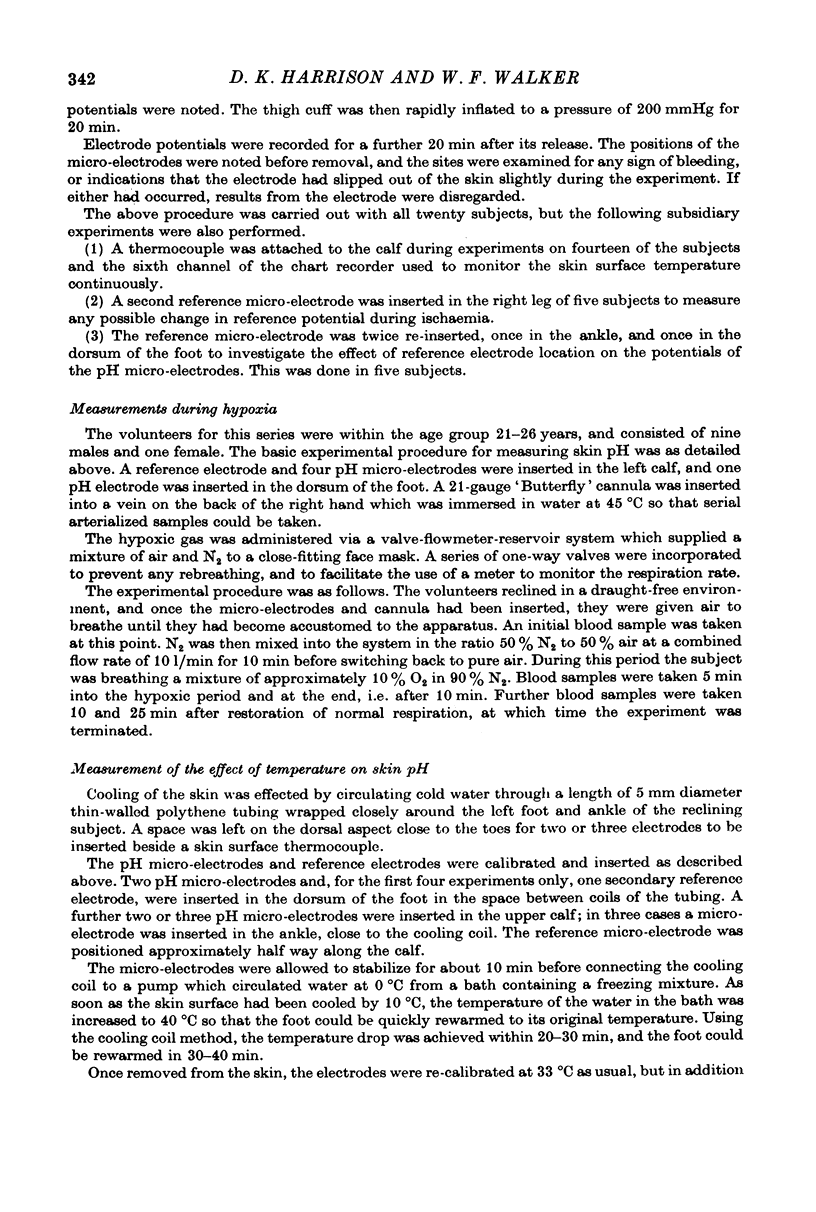
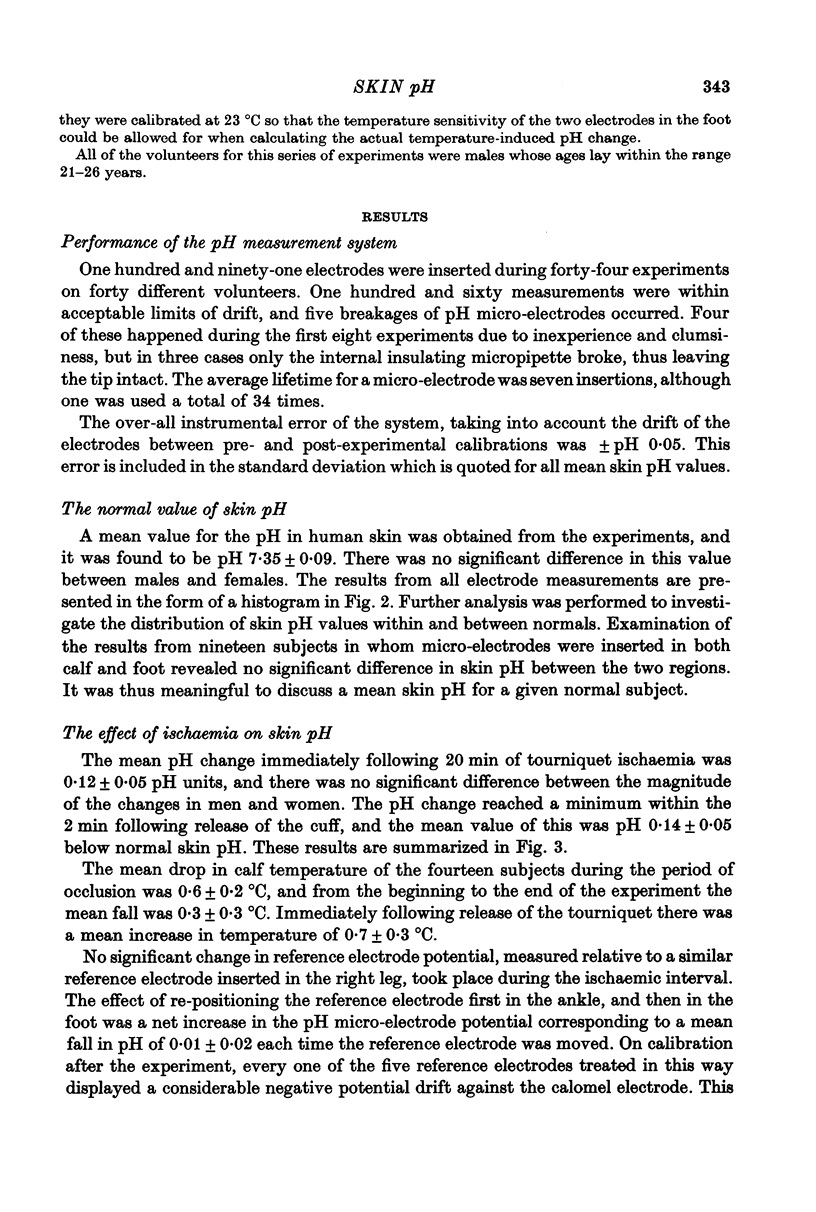

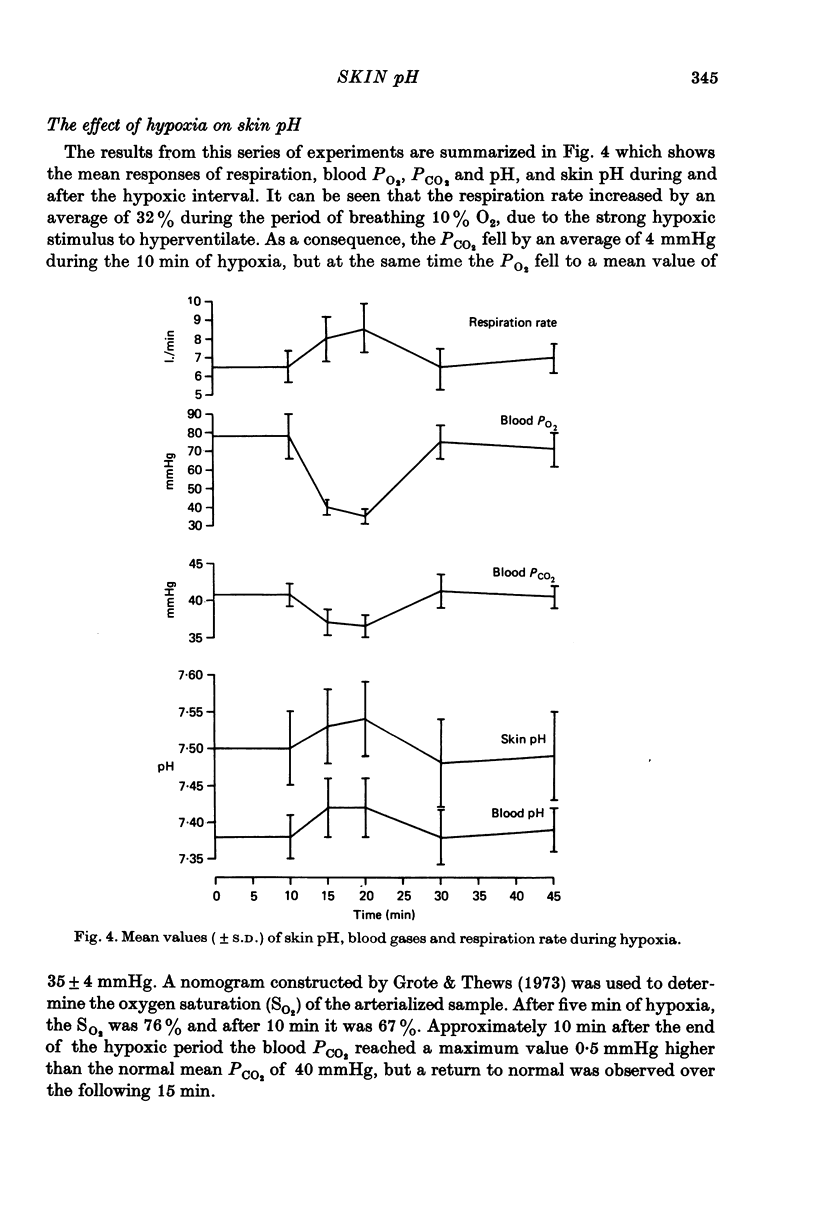

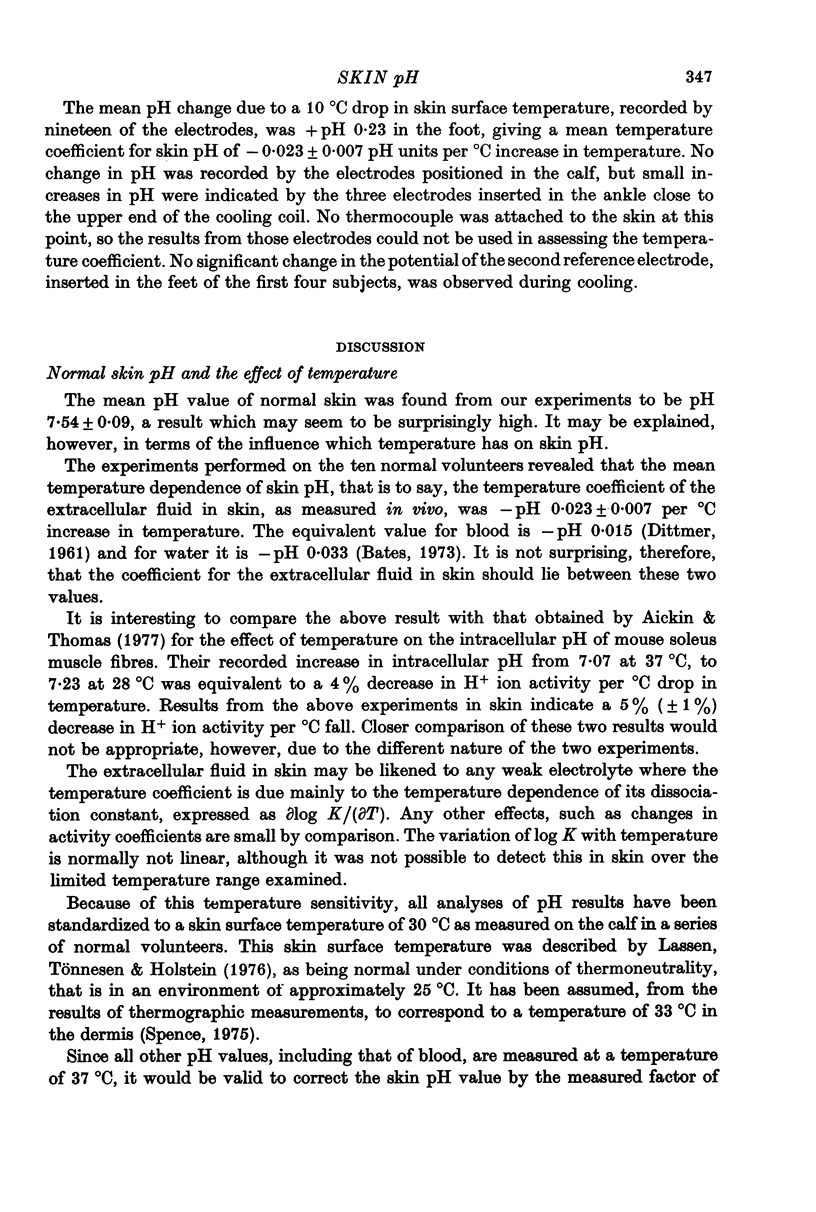
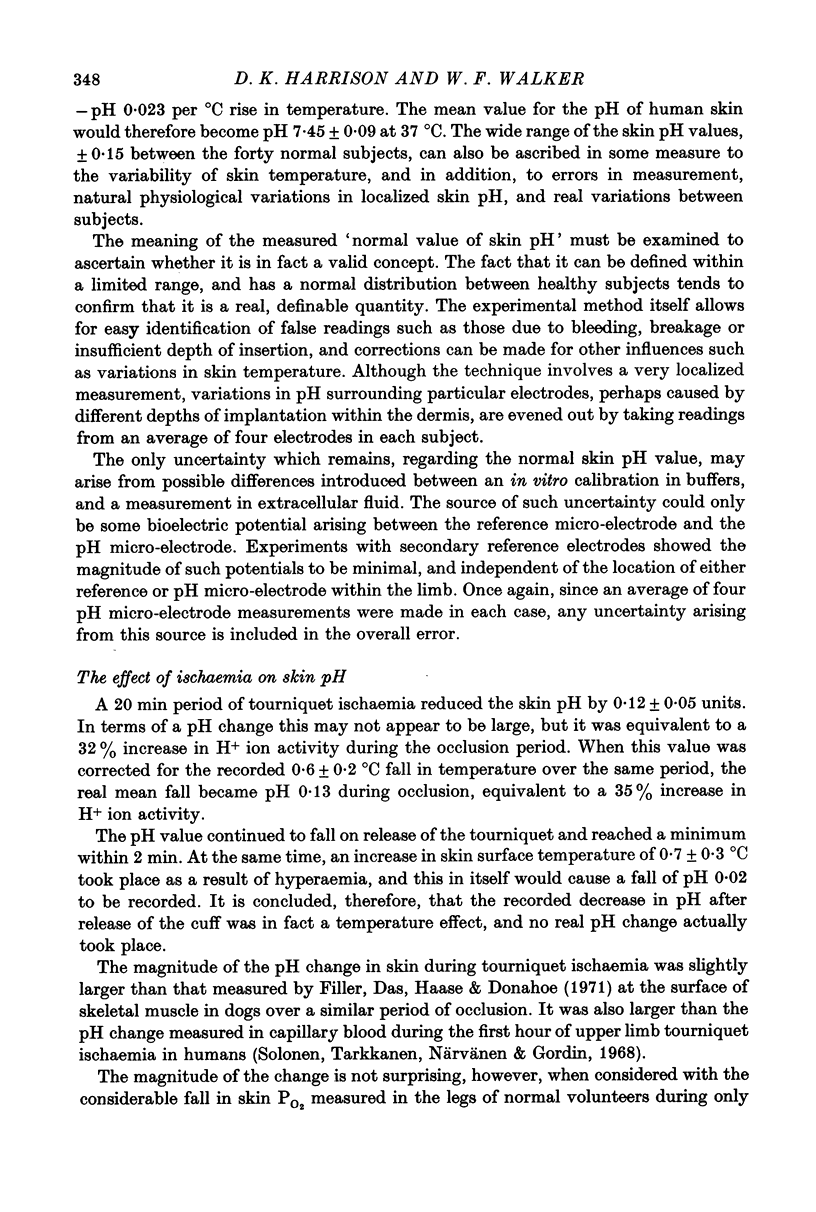

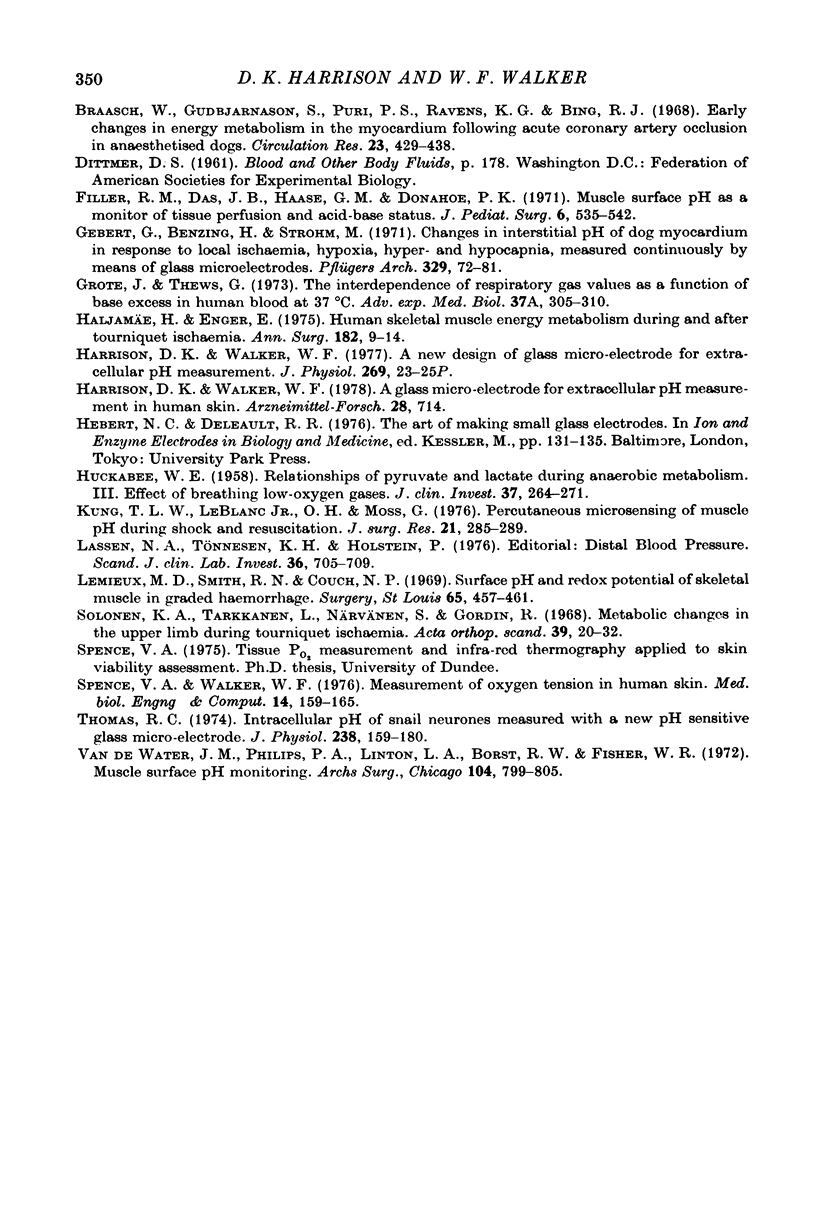
Selected References
These references are in PubMed. This may not be the complete list of references from this article.
- Braasch W., Gudbjarnason S., Puri P. S., Ravens K. G., Bing R. J. Early changes in energy metabolism in the myocardium following acute coronary artery occlusion in anesthetized dogs. Circ Res. 1968 Sep;23(3):429–438. doi: 10.1161/01.res.23.3.429. [DOI] [PubMed] [Google Scholar]
- Filler R. M., Das J. B., Haase G. M., Donahoe P. K. Muscle surface pH as a monitor of tissue perfusion and acid-base status. J Pediatr Surg. 1971 Oct;6(5):535–542. doi: 10.1016/0022-3468(71)90375-7. [DOI] [PubMed] [Google Scholar]
- Gebert G., Benzing H., Strohm M. Changes in the interstitial pH of dog myocardium in response to local ischemia, hypoxia, hyper- and hypocapnia, measured continuously by means of glass microelectrodes. Pflugers Arch. 1971;329(1):72–81. doi: 10.1007/BF00586901. [DOI] [PubMed] [Google Scholar]
- Grote J., Thews G. The interdependence of respiratory gas values and pH as a function of base excess in human blood at 37 degrees C. Adv Exp Med Biol. 1973;37A:305–310. doi: 10.1007/978-1-4684-3288-6_38. [DOI] [PubMed] [Google Scholar]
- HUCKABEE W. E. Relationships of pyruvate and lactate during anaerobic metabolism. III. Effect of breathing low-oxygen gases. J Clin Invest. 1958 Feb;37(2):264–271. doi: 10.1172/JCI103605. [DOI] [PMC free article] [PubMed] [Google Scholar]
- Haljamäe H., Enger E. Human skeletal muscle energy metabolism during and after complete tourniquet ischemia. Ann Surg. 1975 Jul;182(1):9–14. doi: 10.1097/00000658-197507000-00002. [DOI] [PMC free article] [PubMed] [Google Scholar]
- Harrison D. K., Walker W. F. A new design of glass micro-electrode for extracellular pH measurement [proceedings]. J Physiol. 1977 Jul;269(1):23P–25P. [PubMed] [Google Scholar]
- Kung T. L., LeBlanc O. H., Jr, Moss G. Percutaneous microsensing of muscle pH during shock and resuscitation. J Surg Res. 1976 Oct;21(4):285–289. doi: 10.1016/0022-4804(76)90039-1. [DOI] [PMC free article] [PubMed] [Google Scholar]
- Lassen N. A., Tönnesen K. H., Holstein P. Distal blood pressure. Scand J Clin Lab Invest. 1976 Dec;36(8):705–709. doi: 10.3109/00365517609081928. [DOI] [PubMed] [Google Scholar]
- Lemieux M. D., Smith R. N., Couch N. P. Surface pH and redox potential of skeletal muscle in graded hemorrhage. Surgery. 1969 Mar;65(3):457–461. [PubMed] [Google Scholar]
- Micro-electrode measurement of the intracellular pH and buffering power of mouse soleus muscle fibres. J Physiol. 1977 Jun;267(3):791–810. doi: 10.1113/jphysiol.1977.sp011838. [DOI] [PMC free article] [PubMed] [Google Scholar]
- Solonen K. A., Tarkkanen L., Närvänen S., Gordin R. Metabolic changes in the upper limb during tourniquet ischaemia. A clinical study. Acta Orthop Scand. 1968;39(1):20–32. doi: 10.3109/17453676808989436. [DOI] [PubMed] [Google Scholar]
- Spence V. A., Walker W. F. Measurement of oxygen tension in human skin. Med Biol Eng. 1976 Mar;14(2):159–165. doi: 10.1007/BF02478742. [DOI] [PubMed] [Google Scholar]
- Thomas R. C. Intracellular pH of snail neurones measured with a new pH-sensitive glass mirco-electrode. J Physiol. 1974 Apr;238(1):159–180. doi: 10.1113/jphysiol.1974.sp010516. [DOI] [PMC free article] [PubMed] [Google Scholar]
- Van de Water J. M., Philips P. A., Linton L. A., Borst R. W., Fisher W. R. Muscle surface pH monitoring. Evaluation and clinical application. Arch Surg. 1972 Jun;104(6):799–805. doi: 10.1001/archsurg.1972.04180060049013. [DOI] [PubMed] [Google Scholar]


